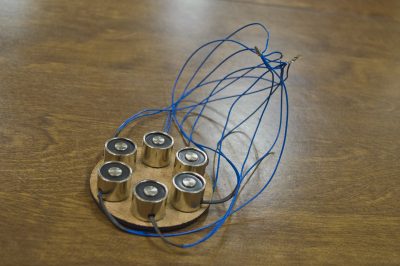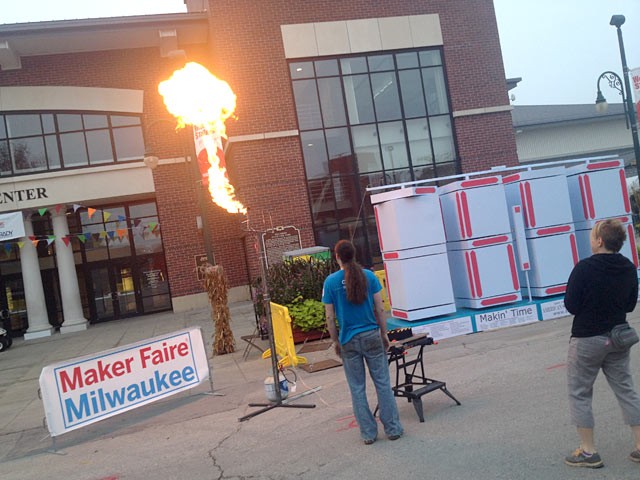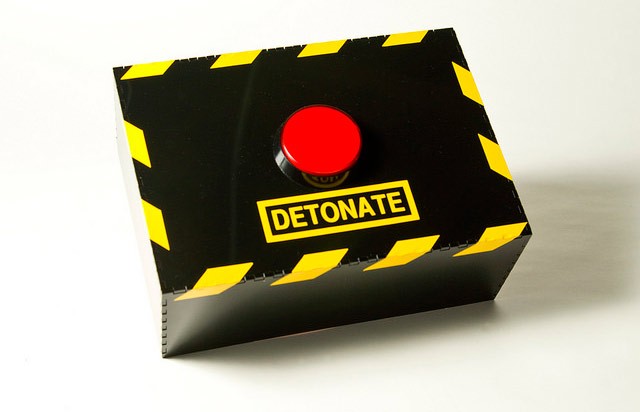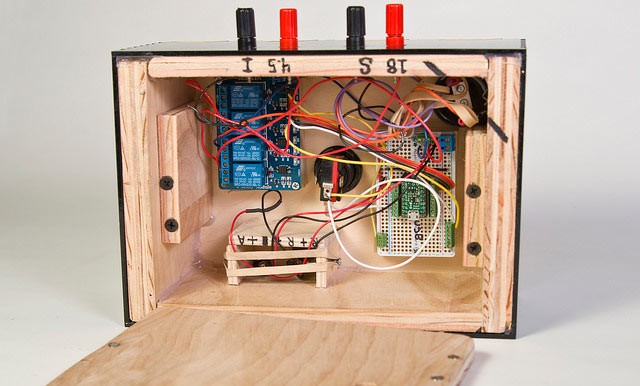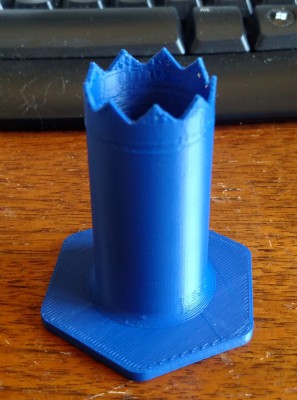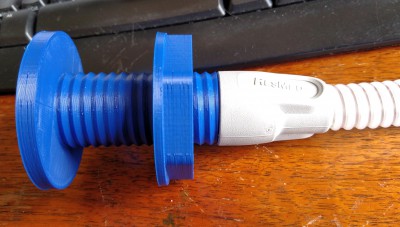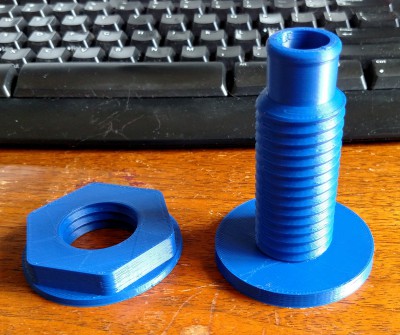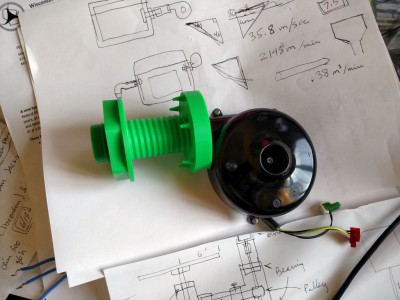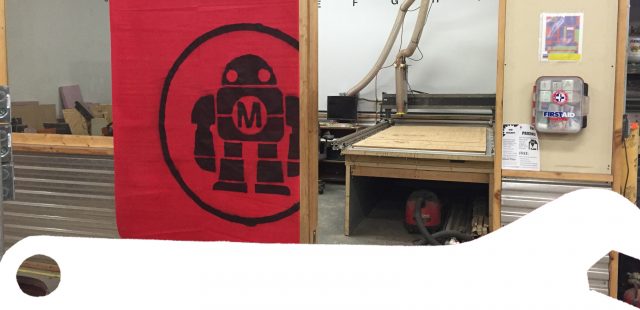
Over the last few weeks the Maker Faire team has been hard at work making some new signs to hang in the exhibit hall. These signs are 10 x 5 feet and will make finding your way around much easier. The logos are first traced on vinyl sheets and then carefully cut out.
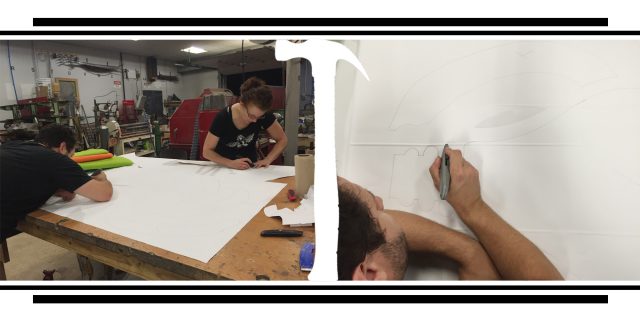
After the stencils are cut they are laid out on the fabric banner for painting. It can be a challenge to get the curved lines of these very large logos to lay flat. Kim, Mike, Kathy, and Pete have been doing a great job. This project has been a labor of love for Kim who designed these signs and has seen them from drawing to fabrication.
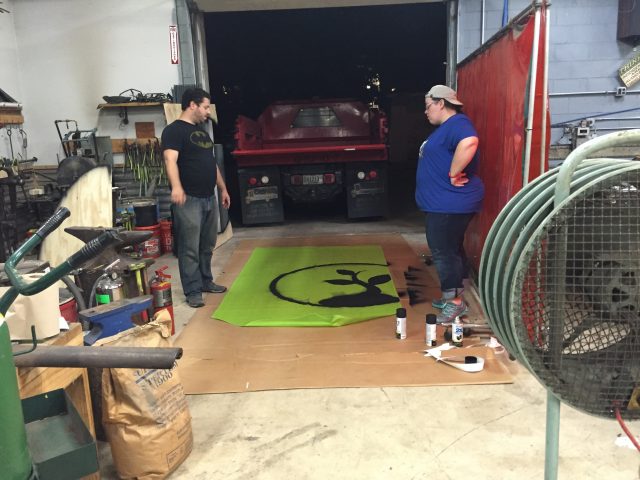
Be sure to look for these signs and lots of others this month at the largest free Maker Faire in the US right here in Milwaukee at Wisconsin State Faire Park. For more information about Maker Faire Milwaukee and all the amazing makers that will be there click here.

